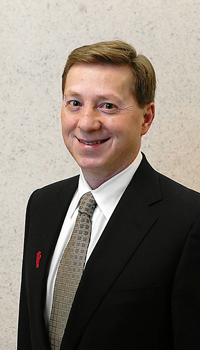
Korpach, 52, is vice chairman of Canadian Imperial Bank of Commerce’s capital markets subsidiary, CIBC World Markets, and head of its global oil and gas merger practice. He first advised Suncor on a merger with Petro-Canada back in 1999, but that deal fell apart on legal grounds: Petro-Canada, founded in 1975 as a Crown corporation, was 19 percent owned by Ottawa and subject to a limit of 20 percent ownership by a single shareholder.
Nevertheless, Korpach didn’t abandon his quest to pull off the merger. And the economic case for a Suncor–Petro-Canada combination continued to mount. Over the past decade western Canada’s energy industry has had to rely more heavily on bitumen, or so-called oil sands. Rich in crude oil, they are difficult to harvest. The high cost of oil sands projects drove energy companies to consolidate.
Petro-Canada, too, could have benefited from consolidation. Although the government sold its remaining stake in 2004, Petro-Canada’s stock languished, in part because the company continued to face a legal barrier to merger. Meanwhile, the financial crisis was heightening the importance of balance-sheet strength. To Korpach the time seemed ripe for another run at the deal.
So he called Suncor’s CFO, Kenneth Alley, in September 2008 and presented an analysis of how to structure the deal. As it turned out, Suncor was contemplating another pass at Petro-Canada. To assist in the strategy, Suncor turned to Morgan Stanley, with which it had a deal relationship, in particular with energy banker Mark Horsfall.
In March, Suncor and Petro-Canada announced an all-stock deal that cleverly circumvented the ownership ceiling. Suncor’s shareholders would own 60 percent of the combined company — to be called Suncor Energy (and valued at the time at C$50 billion) — and Petro-Canada’s shareholders, 40 percent. Through legal sleight of hand, the 20 percent investor limit now applies to the combined company.
“The market was surprised at the deal,” says Korpach. “But the overwhelming rationale of the combination quickly earned a strong endorsement from investors.” From the March 23 announcement through November, Suncor’s share price rose by nearly 25 percent.
Korpach, who developed an interest in finance while watching his father manage a grain farm and a motel in Carrot River, Saskatchewan, earned a Harvard University MBA in 1985. He first worked for CIBC in Calgary — where he is still based — while at business school. During his 24 years with the bank, Korpach has labored on many big energy deals. As vice chairman since 2005, he has some broader bank duties, but Korpach is still very much a deal-making presence in Canada’s energy patch.
| | 1 | Jack Levy | Goldman, Sachs & Co. | |
| | 2 | Alex Wilmot-Sitwell | UBS | |
| | 3 | Thierry Vare`ne | BNP Paribas | |
| | 4 | Michael Klein | Citi | |
| | 5 | Arthur Korpach | Canadian Imperial Bank of Commerce | |
| | 6 | Todd Snyder | Rothschild |





